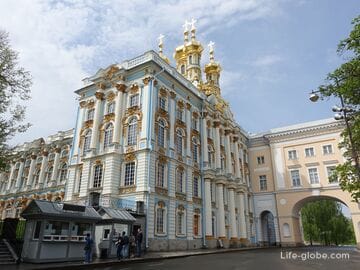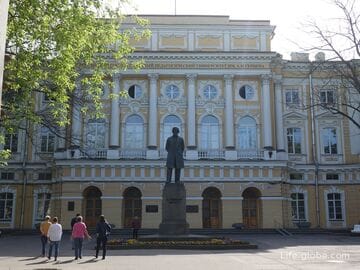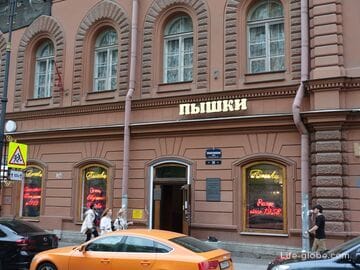The apartment house and folk baths of M.S. Voronin is a beautiful historical complex in the center of St. Petersburg.
The baths still exist today, under the name Lantern baths (description, website and photos of the baths are below).
The building has a pleasant "pink" color, made in an eclectic style with a rich facade finish.
The Voronin complex is located on the Moika River embankment, near The Fonarny Bridge, which in the general surrounding ensemble makes the structure even more attractive.
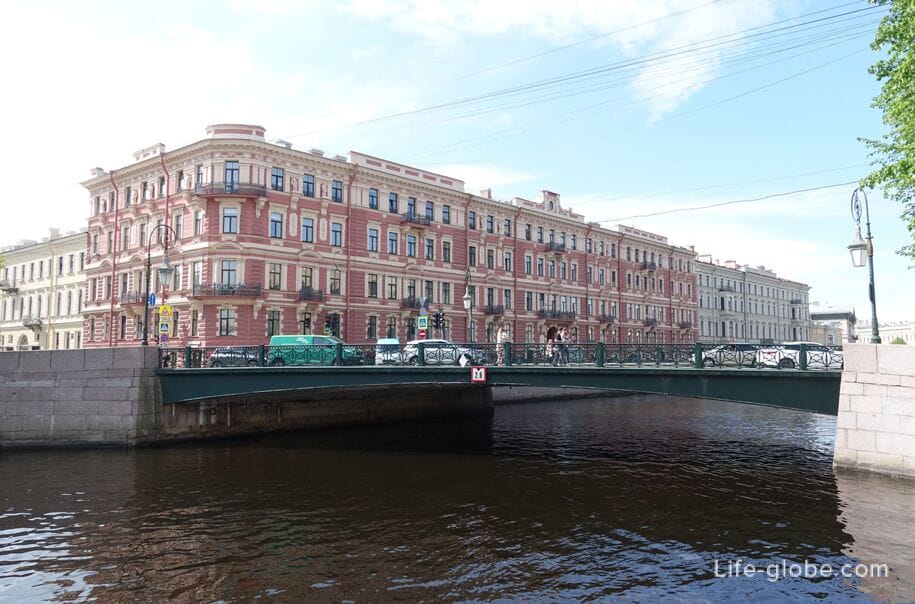
The history of the complex at this place dates back to the 1870s. Prior to that, two buildings were located on the site: the Department of Foreign Trade was located in house No. 80, and the house No. 82 was the Egerman's apartment house (by the name of the owner).
In 1870-1871, according to the project of the comrade chairman of the Russian Society of Public Health, architect Count Pavel Suzor, baths were built in the courtyard, called "Voroninsky" after the owner - merchant of the 3rd guild and academician Mikhail Stepanovich Voronin.
The bathhouse was opened for visitors in June 1871. All the masonry of the building was made on Rocher cement, which is not afraid of any dampness, and inside the baths had all modern technical achievements: special ventilation, fountains and marble pools with adjustable water level and temperature (water came from its own artesian spring), tiled heaters with sprinklers, special asphalt pavement for walking barefoot, etc. The women's department had Louis XVI-style furniture; there was a stuffed bear on the stairs at the entrance (until the 1950s), and a huge window with Venetian frosted glass looked out from the lobby onto Lamppost Lane, and a marble statue stood by the window. Terracotta statues were installed inside the premises - D. I. Jensen Square.
For the creation of baths in 1872 at the Polytechnic Exhibition in Vienna, architect Suzor was awarded a gold medal.
There was also an apartment building in the complex, which also received the name "Voroninsky". In 1874, according to the project of architect Pavel Suzor, the apartment house was built on another floor with a change in the decor of the facades.
After the revolution of 1917, state institutions were located in the house, and the bathhouse still existed with its own profile, under the name "Baths No. 43", but most of the guests called them "baths on the lantern", "Lantern baths" or simply "Lanterns". Today, the bath complex operates under the name "Lantern Baths".
The four-storey stone house has retained its original structure and facade decoration in the eclectic style. The front facades of the building have a symmetrical axial composition with pronounced central and lateral risalites, which are decorated with an arched passage, balconies on brackets with fencing, crowning attics of curved and rectilinear shape. The building is crowned with a profiled cornice with crackers. Metal canopies are placed above the entrances. The basement is lined with limestone stone.


Nowadays, the Lantern baths have public female and male classes with a Russian steam room, historical cabins, a hammam and an original tiled fireplace.
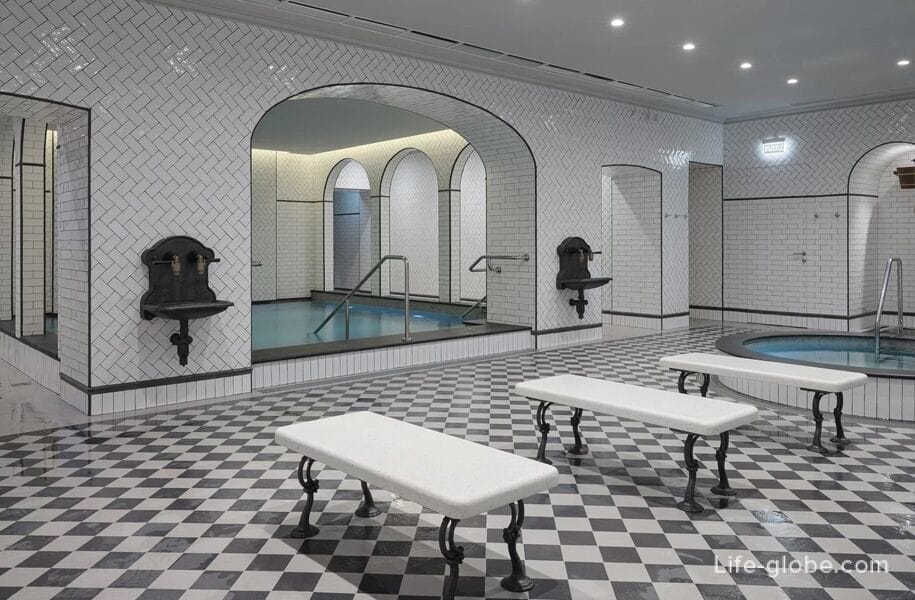
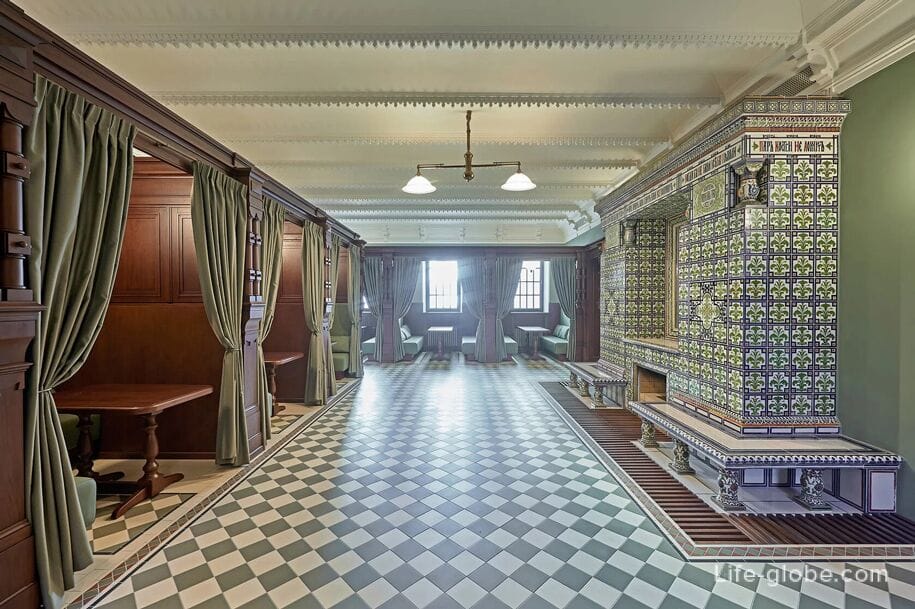
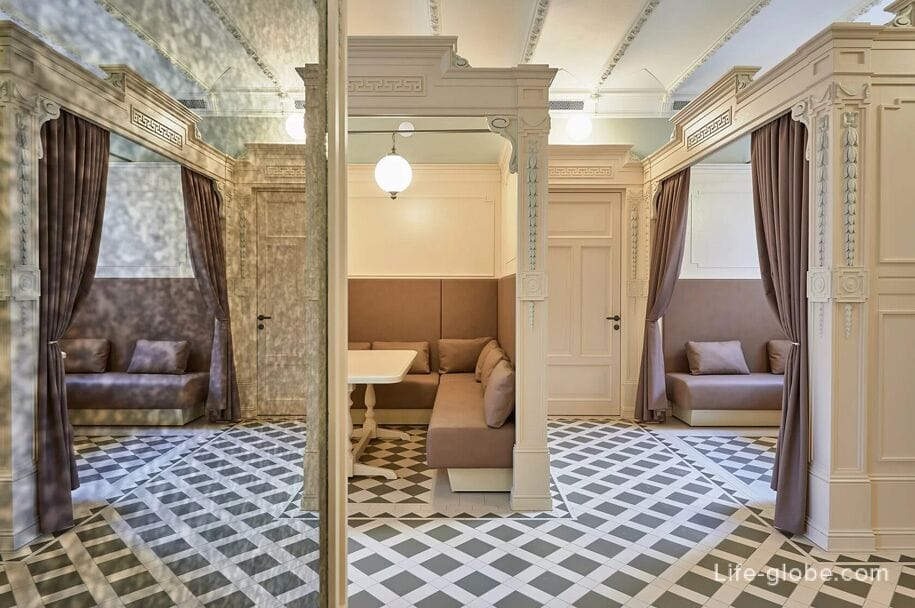
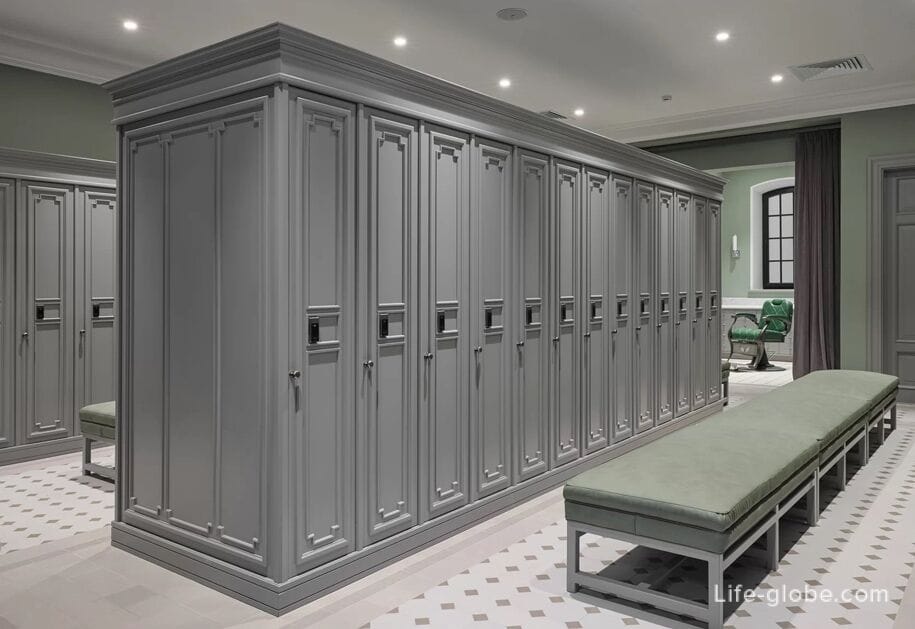
Practical information
Address of Voronin's apartment house and folk baths: Moika River embankment, 80-82 / Lantern Lane, 1x.
Entrance to the functioning Lantern Baths from Lantern Lane, 1.
The website of the Lantern baths: fonari.
Nearest metro stations: "Admiralteyskaya", "Nevsky Prospekt", "Gostiny Dvor", "Sadovaya", "Spasskaya" and "Sennaya Ploshchad".
All accommodation facilities in St. Petersburg, including in the city center and more remotely from it, can be viewed and booked here






